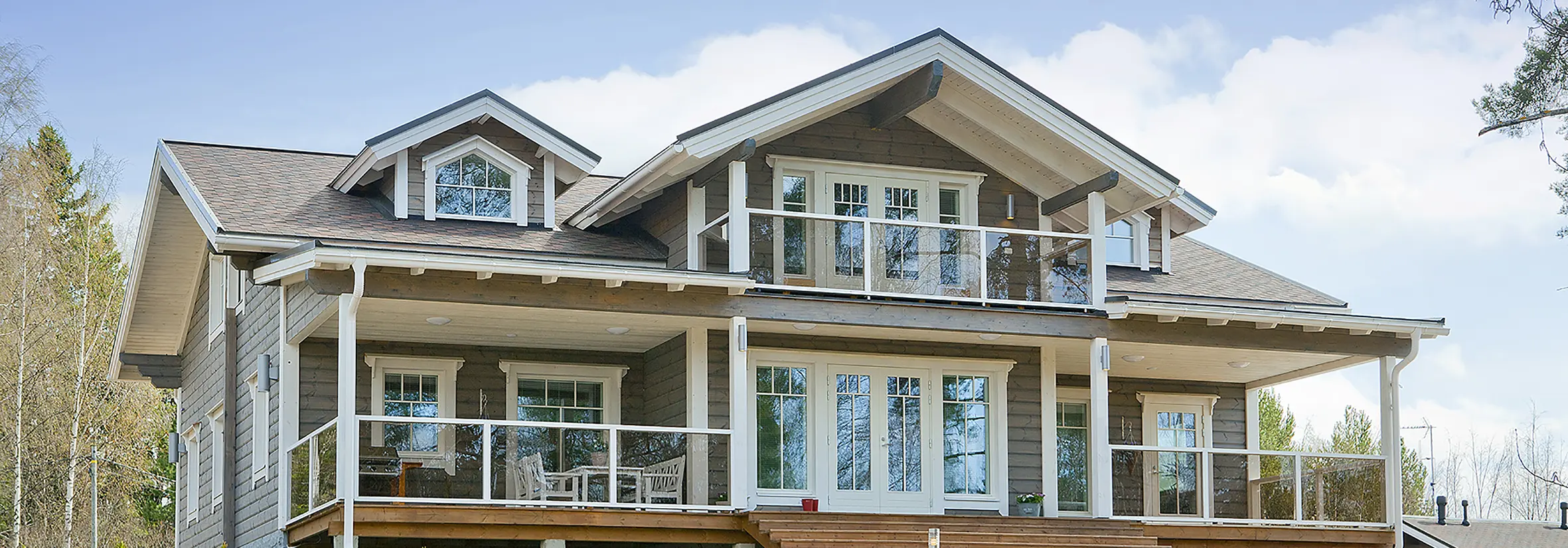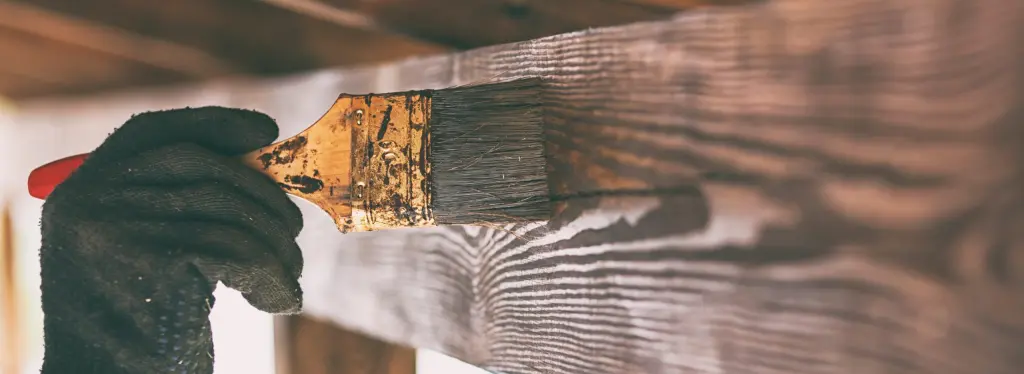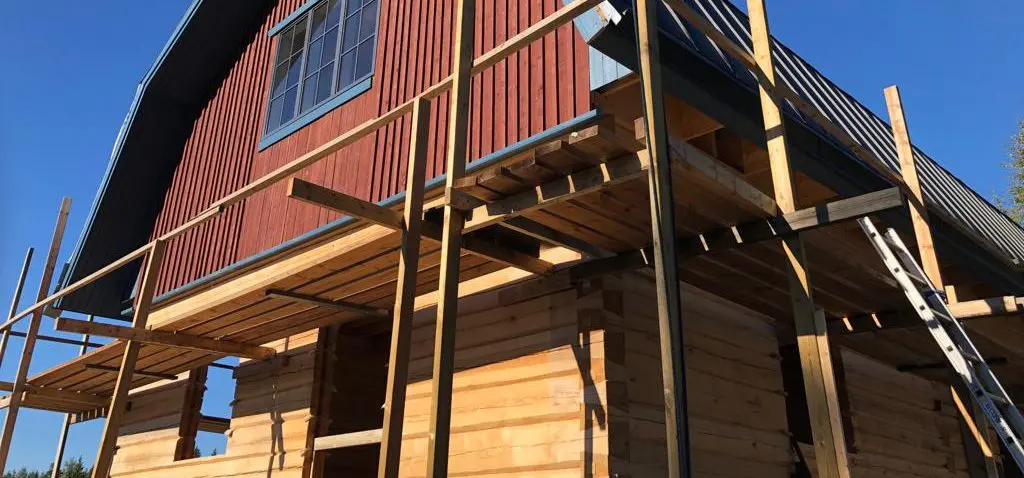The log house can be painted when you are aware of the properties of the new planed surface.
With these instructions, you will ensure the absorption and infection of the paint.
The painting of a log house in general follows the same pattern as the exterior painting of any wood surface, but as the material, the log is slightly different from the board surfaces. The most important thing to consider when painting a new log surface is how much the processing agent can be received, that is, to what extent the treatment agent is absorbed. Absorption is influenced by the freshness of the log and the extracts it contains, and the roughness of the surface is affected by the infection. To ensure absorption and infection, the painting instructions differ slightly from the normal.
The planer log is dense and slippery
When the logs were once carved by hand, the surface of the log remained somewhat rough, with a great paint as a paint. At that time, the log mostly got its surface at home in a barrel boiled red paint, which, due to its composition, requires roughness to grasp the surface well.
Carving manual carving is too slow and expensive, and most of the log surfaces are planed. The planing partially closes the surface cell of the wood, complicating the absorption of the treatment agent. The surface remains smooth and slippery, which reduces the infection. Also glued log structures, such as lamella log, are also very tight and smooth at first. Time and nature do their job, and within a couple of years, the surface of the planed log frame is derived and porosens so that the infection and absorption significantly improve. The new planed surface can be rolled by grinding to improve infection, but on large surfaces it is a pretty laborious option.
Fresh log contains extracts
Depending on the species of wood and its freshness, the new log may still contain a lot of extracts that interfere with the absorption of the surface treatment agent. Such extracts include phenolic compounds, fatty acids, resin acids and waxes. As the wood grows, the purpose of the extracts is to protect the wood and to take care of the storage of the diet, but when the wood is felled, the extracts are gradually removed by evaporating. Some of the substances, such as resin, come out by draining.
For a couple of years, it is usually enough to evaporate extracts, after which the surface treatment agents can be effectively absorbed into the wood. In the meantime, the surface of the wood can be protected by a mildew that prevents mold and algae growing. It is a good idea to do mold protection every year in early autumn. However, it is not always possible to wait a couple of years before surface treatment. In this case, the painting instructions are slightly different from the normal instructions.
Painting a new log wall
In order to ensure the absorption of surface treatment on the new log surface, the treatment material must be sufficiently thinned. To ensure the adhesion, the pigment layer is also left thin. For this reason, it is recommended to paint log surfaces only once in the first year. The guidance varies slightly according to the paint type. Below you will find product -specific guidelines for all Uula's exterior paints in the extent that they apply to new planed log surfaces. Check out the paint you use for full product -specific painting instructions on your own product page.
Painting a log house with Uula Roslag's mahog
The new planed log surface is treated with Uula Home Protection , which is painted with an un thinning Uula Roslag's mahogany once. Paint one log at a time, smoothing at the end of the log. Avoid overlap and seams, as the first painting will remain quite heard. The surface can be treated for the second time 1-2 years after the first painting. Note that the color of the chassis affects the tone of the painted surface and the own tone is strengthened by the second painting.
Log house painting with Uula Petrole or Linseed Oil Paint
The new planed log surface is treated with Uula Home Protection, which, after the dried surface, is painted with 30% thinned Uula Petroleum or linseed oil paint once. thinning of Uula Oil Paint is used as a thinner . Paint one log at a time, smoothing at the end of the log. Avoid overlap and seams, as the first painting will remain quite heard. The topcoat can be done at the earliest 2-3 years after the first painting, with petroleum oil paint once, with linseed oil, twice, according to the normal surface painting instructions for the products.
Log house painting Uula with cooking paint
The new planed log surfaces can be painted once with Uula soup 1: 1 mold protection thinned. In this case, no separate mold protection is required. Paint one log at a time, smoothing at the end of the log. Avoid overlap and seams, as the first painting will remain quite heard. The topcoat can be done 1-2 years after the first painting in an unpaid cooking paint as a one-time painting.





